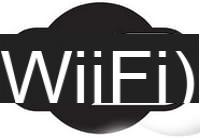Wi-Fi is increasingly the preferred method of connecting to the Internet around the world. To access this type of connection, you must have a wireless network adapter on the computer. Wi-Fi provides wireless connectivity, emitting frequencies between 2,4 GHz to 5 GHz, based on the amount of data on the network. Areas where you can connect to Wi-Fi are known as "Hotspots". Advanced software such as WirelessMon can be used to detect and request connection to hotspots. To establish a wireless connection, it is important that the wireless router is plugged into the Internet connection and that all required settings are correctly set.
What is Wi-Fi and how does it work?

Wireless technology has become widely used in recent times and you can go online from almost anywhere ... at home, at work, in libraries, schools, airports, hotels and even in some restaurants. .
The wireless network is known as Wi-Fi (Wireless Fidelity) or 802.11 network standard because it covers IEEE 802.11 technologies. The main advantage of the Wi-Fi connection is that it is compatible with almost all operating systems, gaming devices, and advanced printers.
How does Wi-Fi work?
Like your mobile phone, a Wi-Fi network uses radio waves to transmit information through a network. The computer must have a wireless network adapter that will translate the data sent into a radio signal. This same signal is transmitted, via an antenna, to a decoder: the router. Once decoded, the data will be sent to the Internet through a wired Ethernet connection. The wireless network operates as two-way traffic. Data received from the Internet will also need to pass through the router to be encoded into a radio signal, which will be received by the computer's wireless adapter.
Frequencies
A wireless network transmits at frequencies of a level of 2,4 GHz or 5 GHz in order to be able to adapt to the amount of data sent by the user. 802.11 network standards vary little, depending primarily on user needs, as explained below:
1. 802.11a transmits data at a frequency level of 5 GHz. The OFDM (Orthogonal frequency-division multiplexing) used improves reception by dividing the radio signals into smaller signals before reaching the router. You can transmit a maximum of 54 megabits of data per second.
2. 802.11b transmits data at a frequency level of 2,4 GHz, which is a relatively slow speed. You can transmit a maximum of 11 megabits of data per second.
3. 802.11g transmits data at 2,4 GHz, but can transmit a maximum of 54 megabits of data per second because it also uses OFDM encoding.
4. The more advanced 802.11n can transmit a maximum of 140 megabits of data per second and uses a frequency level of 5 GHz.
What is a Hotspot?
The term Hotspot is used to define an area where Wi-Fi connection is available. It can either be through a closed wireless network at home, or in public places like restaurants or airports.
As stated previously, to be able to access a Hotspot, your computer must have a wireless adapter. If you are using an advanced laptop model, a wireless transmitter will likely be included as standard. Alternatively, you can purchase a wireless adapter that plugs into the PCI slot or USB port. Once installed, your system will automatically detect the hotspots and may request a Wi-Fi connection. If it is not automatically detected, you will need to use software to handle this task for you.
Avanquest Connection Manager
Download link: Avanquest Connection Manager
CommView for Wifi
Download link: CommView for Wifi
WirelessMon
Download link: WirelessMon
How to establish a Wi-Fi connection
1. To start your connection with a wireless router, make sure it is plugged into an Internet connection point.
2. You must turn on your modem before connecting your computer to the router using an Ethernet cable.
3. Turn on your wireless router until it is completely ready and open your Internet browser.
4. For Belkin users, enter http://192.168.0.1.
5. For Linksys users, enter http://192.168.1.1
6. If you are not using one of these services, enter http://192.168.2.1
7. Then you can enter the username and password of your router.
8. Set the active SSID (wireless capability).
9. Type the username and password provided by your ISP and select WEP or WPA. Then choose a new password.
Translated by: Trad_Fr




















![[Review] Samsung Powerbot VR7000: the robot vacuum cleaner from Star Wars](/images/posts/6bc44de38605b5c0fa12661febb1f8af-0.jpg)





